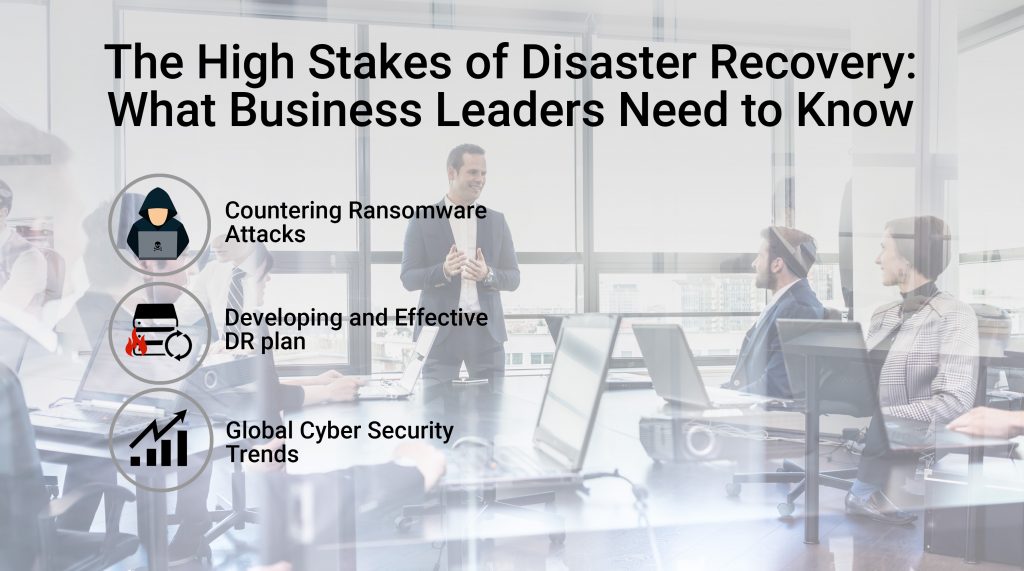In the modern business landscape, disaster recovery is no longer an afterthought. If your business relies heavily on digital systems, a critical data loss or system outage as a result of ransomware can cripple your operations for weeks — sometimes even months — costing you dearly in terms of lost revenue and customer trust. The average ransom demand is $1 million, but the long-term consequences can add up to be 7 times that.
In short: Disaster recovery is now essential to protect your company’s well-being, and you need to be on top of your disaster recovery game to make sure your organization and your data are adequately protected.
One way to do this is by implementing a comprehensive disaster recovery solution that can protect both local and cloud infrastructure. In this article, we’ll discuss the importance of disaster recovery in light of the growing threat of ransomware attacks and what you should consider when choosing a disaster recovery solution to protect against such attacks.
Ransomware Attacks: A Growing Threat
In recent years, ransomware attacks have emerged as one of the most significant threats to businesses of all sizes and types. One of the most important pieces of digital data, which is also one of the most coveted types of data among cybercriminals, is personal information.
Cybercriminals are using malware such as droppers, downloaders, remote access tools (RATs), and ransomware to steal data and gain access to networks. And they mask their malicious activity with legitimate penetration tools making it more difficult to detect and prevent attacks.
They’re even subcontracting their attacks and offering Ransomware-as-a-Service (RaaS), allowing cybercriminals to deliver more ransomware attacks. Bad actors offer ransomware tools for a fee or as a portion of the illegal proceeds. This lets them rent the services they need rather than having to develop their own tools or software, allowing them to increase the volume of the attacks.
Data loss is one of the most immediate and pressing concerns following a ransomware attack. Depending on the scope of the attack and the effectiveness of your organization’s backup systems, data loss can range from minor to catastrophic. In some cases, companies may never fully recover their lost data, leading to long-term operational challenges and financial losses.
Your cloud service provider should help you put in place ransomware protection and create and implement a comprehensive and reliable disaster recovery plan that includes backup and storage solutions.
Developing an Effective Disaster Recovery Plan
Developing a comprehensive disaster recovery plan should take into account the ever-evolving threat of ransomware. It’s an absolute must if you want to ensure that your operations can continue in the event of a major disruption.
When considering what will pass as effective, you should look at factors such as:
- fast detection, response and ransomware recovery;
- policy and workflow creation;
- automated failover and failback orchestration; and
- software-defined file and object services.
With Cohesity Helios through Stage2Data, you can simplify, secure and manage your data and backups. Helios protects all of your data, including on-premises, cloud, and SaaS data and can be used to manage all of your files, block- and object data.
It will give you peace of mind through:
- Complete data visibility for insights into growth, usage, and ransomware protection.
- Compliance and governance support through data retention policies, audit trails, and access controls.
- Smart ransomware detection for quick identification of clean backups.
Final Thoughts
According to Cybersecurity Ventures’ Ransomware Market Report, global ransomware trends for damage will grow 30% year-over-year over the next decade with damages estimated to exceed $265 billion annually by 2031 and a new attack happening every two seconds.
You need a rock-solid last line of defense to stop ransomware attacks dead in their tracks. With Helios on board, you no longer have to waste time sifting through backup copy jobs. You’ll know exactly when and where a ransomware breach happened and see potentially infected and changed files. Helios also lets you restore the last clean copy of your data in minutes.
If you’re ready to minimize downtime, reduce financial losses, maintain compliance, and protect against ransomware, speak to us or book a free consultation.


